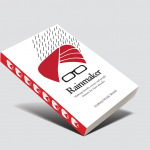The click has ruled over digital advertising since the onset of the internet age, providing the make-or-break measurement that brands require to analyze and optimize campaign performance (and that publishers rely on to price and sell inventory).
But voice interfaces – owning to the consumer popularity of Alexa, Siri, and other platforms – are quickly becoming ubiquitous and changing how brands and publishers must think about reaching consumers.
Gartner projects that by 2020, 30% of web browsing sessions will happen through screenless voice interactions using smart speakers and mobile devices.
At the same time, a recent GlobalWebIndex survey finds that consumers in the APAC region are currently the most engaged with voice technologies, with 52% already using voice tools in some capacity.
This fact points to APAC as a key marketplace for the sea change now playing out, as Juniper Research predicts an $80 billion global voice commerce market by 2023. Instreamatic, is actively partnering with APAC-region media publishers in anticipation of this industry movement.
Considering that audio cannot be clicked, advertisers will require a new standard of measurement in sync with the convenience and interactivity that so successfully draws consumers to voice experiences.
Brands have an emerging voice-based medium through which to connect with consumers: dialogue advertising.
Powered by AI, speech recognition, and natural language understanding, dialogue advertising enables brands to engage with potential customers in natural conversations.
The ads on audio-centric platforms (a streaming music app, for example) prompt listeners to verbally respond to accept brand offers – or simply skip ads that don’t interest them. Done right, the wholly new kind of ad type delivers a more pleasing user experience that’s unlike anything click-based advertising has to offer.
Further, voice-enabled advertising eliminates several of the biggest issues its click-based counterpart has, from sparing users the obnoxious experience of finding and clicking the “X” on ads that annoy them, to all but eliminating click fraud since real human voice responses are inimitable.
At the same time, dialogue ads are capable of seamlessly matching their style with surrounding content, whether it’s on streaming audio, a podcast, a search assistant, or another platform.
And, because dialogue ads can be shorter, less intrusive, and far more responsive and intelligent than click ads, brand marketers can capture users’ attention that much more thoroughly.
With potential customers actively considering offers and how they’ll respond verbally, dialogue ads command higher recall rates and expedite customers’ paths through the purchase funnel (early dialogue advertising campaigns for IKEA and HP have in fact achieved striking metrics, including interest rates of 4.28% and 3.7% respectively, and in IKEA’s case a stunning 58.3% reach rate where 25-35% is considered the industry norm).
Beyond providing superior experiences and engagement, dialogue advertising’s most beneficial feature is arguably the rich real-time voice interaction data it collects (to which click data is simplistic by comparison).
Advertisers can utilize the AI that delivers dialogue ads, which leverages machine learning as a powerful analytic tool to understand the specific verbal phases, user responses, and other granular elements associated with successful customer conversions.
This ad technology evolution further enables iterative optimization of dialogue ad campaigns in real-time, driving ads to be increasingly effective, and ever more enjoyable experiences for users.
Whereas traditional click-based ads have always counted on a high frequency of exposure for success, I believe dialogue ads can prove vastly more efficient and effective, eliminating the need to overwhelm individuals with frustrating ad repetition.
Looking forward, future dialogue ad applications stand to unlock access to customers across an array of emerging mediums, from connected TVs to eSports broadcasts and more.
By deploying dialogue ads, advertisers can prepare their brands for the coming shift toward voice as a dominant medium, deliver meaningful experiences that customers both like and remember – and have the metrics to prove it.
source: Stas Tushinskiy, CEO, Instreamatic
MARKETING Magazine is not responsible for the content of external sites.










